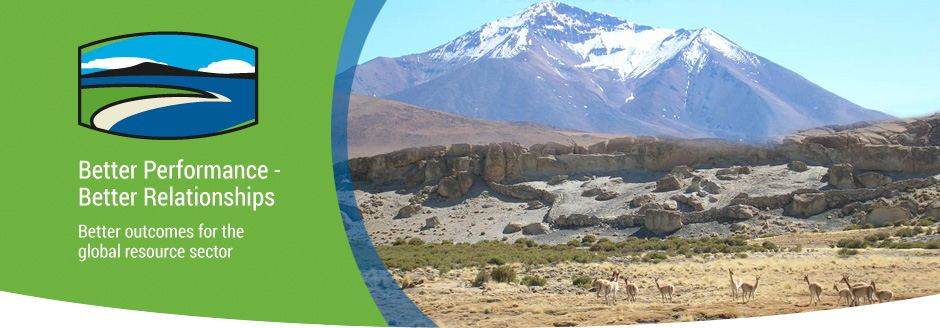Our approach is grounded in 20 years of listening to communities talk about their relationship with resource development projects; of what leads to broad acceptance or approval of a mine, wind farm, or similar activity in their ‘back yard’.
For some time the metaphor to describe this phenomenon has been the ‘Social License to Operate’. However, until relatively recently the processes that lead to broad social acceptance or approval were not well understood. The first systematic description of the normative elements – legitimacy, perceived credibility and the presence (or not) of trust in the relationship – was presented by Ian Thomson and Susan Joyce in 2008. Further elaboration was provided in the work of Thomson and Boutilier (2011), which in turn provoked a growing body of studies by academic and institutional researchers (e.g.: Lacey, Parsons and Moffat, 2012; Owen and Kemp, 2012).
Recognition of the normative elements and relevant indicators enabled development of metrics to quantify the quality of the relationship between a development project, host communities and other stakeholders (Boutilier and Thomson, 2011). These have been applied in systematic surveys at mines and other resource projects in Latin America, Africa and Australia. Further collaboration with Robert Boutilier and Leeora Black (Boutilier, Black and Thomson, 2012) led to refinement of an analytical instrument in the form of the four level – three boundary model presented below.

Academic studies (e.g.; Baba and Raufflet, 2014; Zhang and Moffat, 2013) provide independent validation of the Thomson – Boutilier model and identify subtleties related to culture and local regulatory regime. The consolidated findings confirm that relationships are highly context specific and that, while a number of fundamental processes are involved in all cases, there is no universal recipe for relationship building that yields strong, stable acceptance or approval of a project by the local community or other stakeholders.
Our approach is based on the proposition that the Thomson-Boutilier model can be used for much more that measuring the quality of a relationship. It can be applied as:
- A tool for analyzing and understanding company – community/stakeholder dynamics (what is working, what is not, and why?);
- A framework for the design of strategies and tactics to build strong, stable relations; and
- A rational basis for evaluating outcomes.
Our approach is rooted in the local context, inherently strategic, process based, and outcomes oriented. The objective is always to reduce risks and create results that are positive for all parties involved, particularly host communities. It guides all we do for our clients.
- References:
- Baba, S. and Raufflet, E. 2014, Managing Relational Legacies: Lessons from British Columbia, Canada. Administrative Sciences, 4, 15-34
- Boutilier, R., Black, L., & Thomson, I. 2012, From Metaphor to Management Tool – How the Social Licence to Operate can Stabilize the Socio-Political Environment for Business. Proceedings, International Mine Management Conference, Brisbane
- Boutilier, R. and Thomson, I. 2011, Modeling and Measuring The Social License To Operate: Fruits Of A Dialogue Between Theory And Practice. Proceedings International Mine Management Conference, Brisbane
- Lacey, J., Parsons, R. and Moffat, K. 2012, Exploring the Concept of a Social License to Operate in the Australian Minerals Industry. 26p, Minerals Down Under, CSIRO, Australia
- Owen, J. R. and Kemp, D. 2012, Social License and Mining: A critical perspective. Resource Policy. http://dx.doi.org/10.1016/j.resourpol.2012.06.016
- Thomson, I. and Boutilier, R. 2011, The Social License to Operate; In Darling, P. (ed.), SME Mining Engineering Handbook, Ch. 17.2, pp 1779-1796, Society of Mining Metallurgy and Exploration, Littleton, Colorado.
- Thomson, I, and Joyce, S. A. 2008, The Social License to Operate: What it is and why it seems so hard to obtain. Proceedings, PDAC Convention, Toronto, Canada
- Zhang, A. and Moffat, K. 2013, The Path to Earning a Social License to Operate. In; Wiertz, J. (ed), SRMining 2013, Proceedings of the 2nd International Conference on Social responsibility in Mining. 45-54, Gecamin, Santiago, Chile


